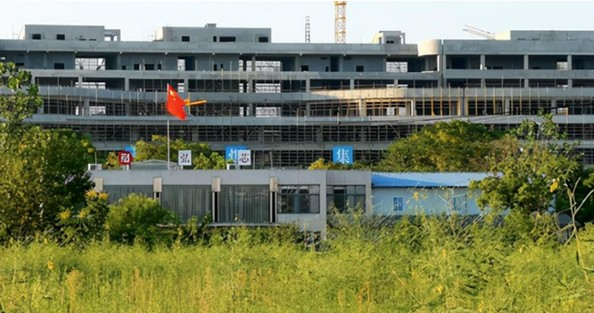Blind Ambition in China
However, despite the initial funding, HSMC was only 10% owned by the government and 90% by a Beijing private company owned by two stakeholders that have investments in a retailer, catering companies, and a number of medical firms, with no experience in semiconductors, and whose promised investment never came. . In fact HSMC did purchase the only 7nm mask aligner from ASML (ASML), against US government trade mandates, although after a bit of research we discovered the tool was actually for 14nm and had never been uncrated, as it was being held as collateral for an $85.3m loan made early last year.
In November, the Chinese trade press indicated that Hongxin Semiconductor was undergoing a restructuring and a management change, with the district government taking over the 90% stake it did not own, making it a completely state-owned entity. At that time a new chief executive was also named, as the former TSM executive who the company had pulled out of retirement in 2019 to lead the company, resigned from his post in June. The project, which had originally been slated to begin trial production in 2022-2023 seems to have been put on hold since September as capital had become an issue.
Last week it seems that Hongxin’s senior management stated that “the company has no plans to resume work and resume production,” and requested that all employees apply for resignation between February 28 and March 5, despite the February 8 response to a question about the future of the Hongxin project on the state website, which was “This project is coordinating and advancing.” In October of last year the Chinese Ministry of Industry & Information Technology and the National Development & Reform Commission indicated that “Enterprises are engaged in the integrated circuit industry, and individual places do not have enough understanding of the law of IC development, blindly start projects, low-level repeated construction risks appear, and even some projects have stagnated…resulting in a waste of resources,” a nice way of saying that many do not know what they are doing when it comes to developing semiconductor projects in China.
The state followed the study that came to this conclusion with new ‘specifications’ that require funds to be in place and product technology be available before employees are hired, to ‘protect and regulate the market,’ all under the seemingly more watchful eye of the state government. Last year we discovered two other semiconductor projects in China, Decoma Semiconductor (pvt), a project sponsored by the Nanjing Economic & Technical Development Zone, and Dehuai Semiconductor (pvt) which was stalled after the $1.8b project ran out of money, despite construction being almost 90% completed (phase 1), with the local district government taking over the project and looking for funding. In just the 1st half of last year more than 140 IC related projects were launched in China, with a total investment of 307b yuan ($46.9b US), with many local government and regional support groups looking to help China become less reliant on the global semiconductor industry. Perhaps a bit more oversight is necessary this year.


 RSS Feed
RSS Feed